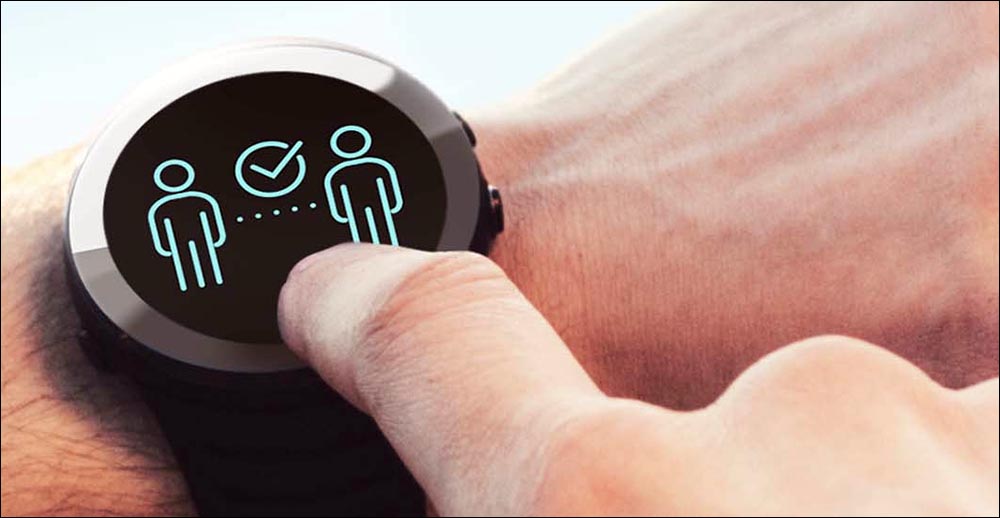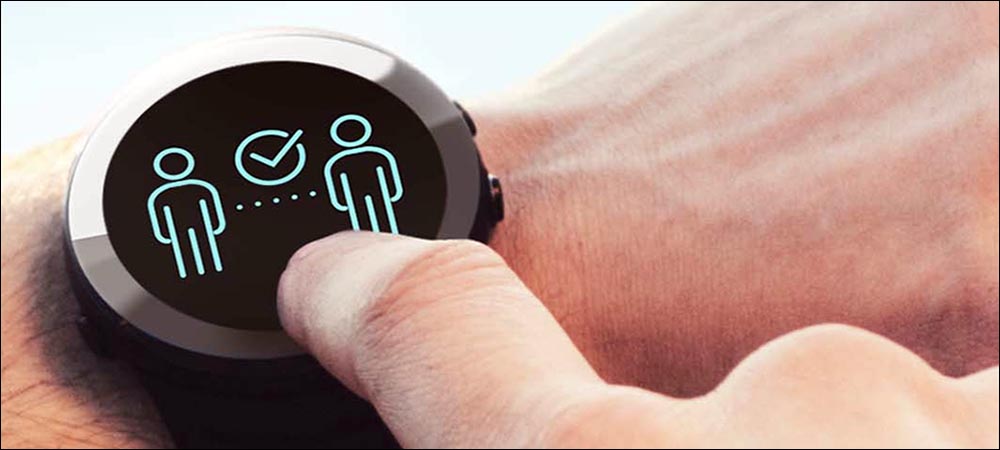Semiconductor technology company Renesas Electronics has teamed up with engineering and R&D firm Altran to develop a wearable solution for social distancing based on ultra-wideband (UWB) technology. The solution provides location tracking up to about 10 centimeters (3.9 inches) at low power, by leveraging a wake-up Bluetooth Low Energy (BLE) transmission and low rate pulse (LRP) repetition frequency. The system leverages a 3db Access low-power chip, as well as Renesas’ Synergy S128 microcontroller.
The wearable device platform, according to Altran and Renesas, offers highly precise location data as an alternative to less precise technology being deployed in other social-distancing systems, such as Wi-Fi or BLE. The 3db Access low-power chip leverages the LRP 802.15.4z protocol in the 6 to 8 GHz range. The use of the LRP version of UWB helps to reduce power consumption as well, making the device about ten times less power-hungry than other UWB chips, according to Daryl Khoo, Renesas Electronics’ VP of product marketing. It also offers location precision of approximately 10 centimeters.

Renesas Electronics and Altran have developed a wearable solution for social distancing based on UWB technology.
Initially, the solution is designed specifically for social-distancing purposes. Individuals wearing the wristwatch (or a wearable from an OEM using the Altran and Renesas platform) could ensure that they do not exceed healthy limits for close contact with others while working. In the long run, though, the solution is intended for a variety of applications, including access control, safety and asset tracking.

Renesas Electronics’ Daryl Khoo
In a typical deployment, an employer would provide each worker with the wristband. While traditional UWB would normally use battery power to pulse transmissions frequently as an individual goes about his or her work, this system is different, the companies report. The system employs BLE to detect transmissions from other devices. Such an event prompts the UWB radio to transmit at a higher rate, thereby detecting the exact location of the other wristband. Based on that data, it can alert the wearer by flashing an LED light on its face and vibrating or buzzing.
The BLE system can forward data about the event to BLE-enabled smartphones so that a manager or other user could collect that information for historical purposes, or to view health risks in real time. The system can also be configured to adjust the distance and time of exposure that is acceptable before an alert is issued. Renesas will begin sampling the UWB chipset during the second half of 2021, and Altran will showcase the social-distancing wristwatch at its innovation lab, according to Joseph Rash, Altran’s VP and global segment leader for semiconductors and electronics.
“We are focusing toward the IoT area, trying to take advantage of technology from the perspective of very low power,” Khoo says. “We believe we can achieve low-cost [solutions],” he adds, using the security characteristics that are built into Renesas’ microcontrollers. Renesas first launched UWB-based technology about a year ago. “We looked at a variety of solutions for UWB,” he states, and one of the first has been this one for social distancing.
For several years, Altran has been working with Renesas to bring solutions to the market. “We’ve done a variety of partnership with wireless technology,” Rash says. Through that engagement, as the COVID-19 pandemic created a new use case, “We recognized the importance of finding a solution that could assist.”
The next phase of deployment, says Nitya Verma, Altran’s director of embedded systems, could include contact tracing and geolocation systems. “We have our own cloud-based platform, and this device could be onboarded onto that platform,” he states. “As of now, we are limiting [our offering] to social distancing for personal purposes.” With this first version of the solution, there is no sharing of data regarding individuals and their locations, and thus their behavior at work.

Altran’s Joseph Rash
That, Verma says, means companies could further benefit from real-time data, including location-based services, if they chose to do so, by deploying UWB anchors that identify not only the close proximity of two wristbands, but also where those bracelets are and where they have been. “The unique thing about this platform is you can use the same hardware chip—just convert it into a different form factor,” such as UWB anchors. In that way, users could track social interactions, as well as the locations where individuals were, which could be traced in the event of an employee testing positive for the coronavirus.
The companies expect OEMs to build their own solutions based on that functionality. “As a company,” Verma explains, “we enable others to build products using this platform and customizing it to their needs.” Solution providers could also integrate the RTLS data with a company’s HR software to identify the movements of individuals. Altran and Renesas are currently in discussions with several potential customers for social-distancing applications, but they have declined to name those companies.

Altran’s Nitya Verma
In the long run, the technology could be used for building automation or to provide factory automation for access-control or safety application. For instance, with asset tags attached to factory equipment, automation could be provided based on the locations of the tools used for each production process. Access control could enable the unlocking of secured areas based on a specific device carried by an individual. And safety applications could involve equipping pedestrians and equipment operators in industrial settings with the UWB devices, which would detect each other’s presence in order to reduce the risk of collisions. Users could set up geofencing, to manage who enters restricted zones, Khoo says.
In addition to firms seeking the social-distancing solution, the companies are also in conversations with healthcare providers and government facilities for a variety of use cases. “There will be a considerable market for the next few years,” Verma predicts, due to the many potential use cases.


